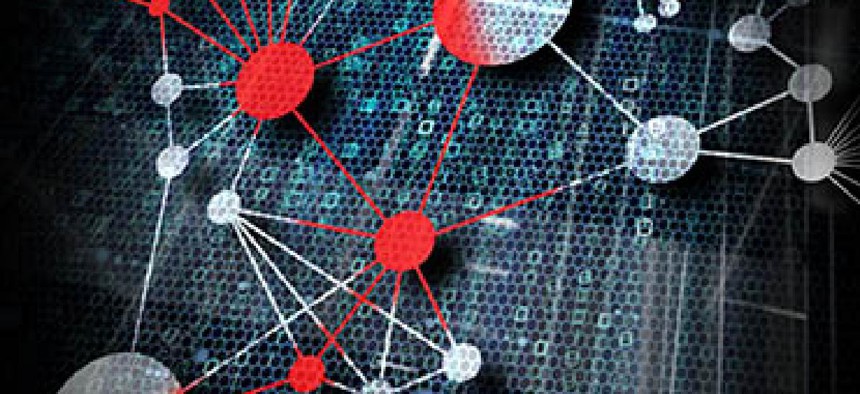DHS cybersecurity office appeals to industry for innovation

DHS looks for industry to help keep up cyber defense programs like Einstein and CDM.

DHS looks for industry to help keep up cyber defense programs like Einstein and CDM.
Federal agencies have redoubled their innovation efforts, but cybercriminals and attackers keep skipping ahead. And according to a top DHS cybersecurity official, private industry is the key to tripping them up.
"This is not the government of 20 years ago," said Phyllis Schneck, deputy undersecretary for cybersecurity and communications at the Department of Homeland Security's National Protection and Program Directorate. "We have to run on private innovation. You move faster than we do. We've made a lot of changes to move faster and you still move faster than we do."
With the accelerating growth of the Internet of Things, which could bring 50 billion more objects onto networks in the coming years, DHS' need for private-sector innovation is greater than ever, Schneck told a roomful of cybersecurity contractors at a Dec. 16 industry day in Washington.
The agency's Einstein perimeter detection system, although workable, is aging, she said.
"When I came into DHS," Schneck recalled, "people sat down with me and said 'Einstein is 10 years old. We need you to understand this and we need you to think about it.' I said 'Einstein is 25 years old -- that is technology that's 25 -- but I will look at it."
Schneck said the Einstein system is still revolutionary, as it's the only one in the world that can "block and tackle" to protect classified information. "Crooks are still stupid," she said. "We are still blocking and tackling on a lot of 'seen before' signatures and protecting against a lot."
She added that the system produces "amazing" situational awareness for the agency.
Schneck said that although Einstein missed the signature of the attack on the Office of Personnel Management, it subsequently make those signatures known to the federal government, allowing it to "blanket" agency networks and IT facilities with protection after it was discovered. The system also allowed the government to hit the "rewind button" and find other places the newly discovered signature had touched.
"That's how we found the Department of Interior work within the OPM event," she said.
Einstein ties to DHS's Continuous Diagnostics and Mitigation program, Schneck stressed, which is where commercial industry has provided innovation and where it's still needed. "That program brings in your innovation," she said. "There's nothing super super-secret about that. It brings in things that are made in the private sector in a fast, efficient and cost-effective way into government agencies -- finally."





